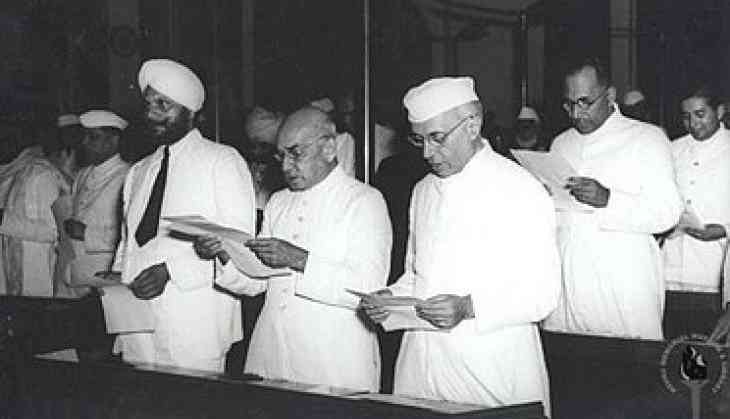
It was at midnight of 14th August 1947, the Constituent Assembly comprising of the chosen representatives of the Indian people, acquired sovereign power and the members solemly took the pledge to serve India and her citizens. “We end today a period of all fortune and India discovers herself again,” said Pandit Nehru in calling upon the members to take the new pledge.
Prior to that the president of the constituent assembly, Dr Rajendra Prasad, stated,“To all we give the assurance that it will be our endeavour to end poverty and squalor and it’s companions, hunger and disease to abolish distinctions and exploitation and to ensure decent conditions of living.”
After 75 minutes of assembly session, in which it assumed power of governance and endorsed the designation of Lord Mountbatten as Governor general. Dr Rajendra Prasad and Pandit Nehru moved forward to the Government house to inform Lord Mountbatten of the assembly’s decisions. Later, the National Flag presented to the Assembly by Mrs. Hansa Metha was hoisted in the middle of cheers of thousands who were outside the council house.
The event reached its peek when at the last stroke of mid-night, people statred crying “Mahatma Gandhi ki Jai”. These were the very first words uttered by the representatives of Indian people on attaining freedom. It was an expression of the people’s gratitude to the creator of the country to whom both Pundit Nehru and Dr Rajendra Prasad paid tributes in their speeches.
The birth of independent India was observed by deplomatic members of the nation representing more than half the population of the globe. Ambassadors of the U.S.A and China were there also High Commissioners of Canada and Australia.
It was the finest hour for Delhi. This capital of many mighty empires became the seat of ‘Lok Raj, government of people, by the people and for the people.
The Assembly was full and looked most impressive. The National Flag adorned the dozen large panels some of which had life size portraits of British officials. The flag gave an apt background for the meeting.
The most gratifying sight of the event was that among members Khadi dress predominated and that even those ordinarily use to European dress code were seen in ‘achkin’. These included BR Ambedkar, Mr BL. Mitter, Mr Panikkar and Mr Zaida.
The assembly secretariat members were all seen in achcan only deputy secretary, Mr Tayabji sported Pakistani turban. Many accepcted Mr Mavalankar, the president of the obsolete Assembly, who was a new inclusion to the house.


